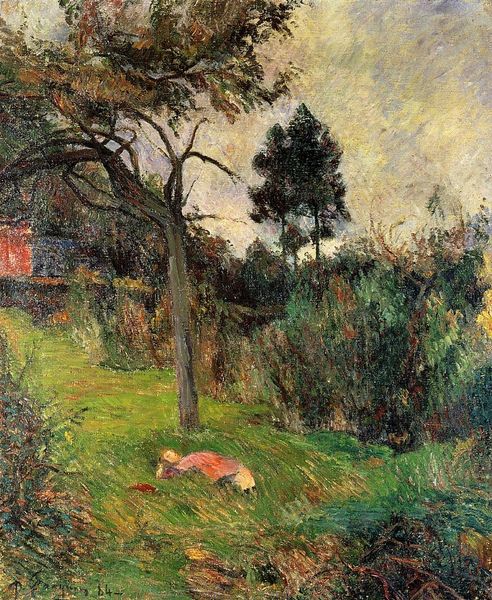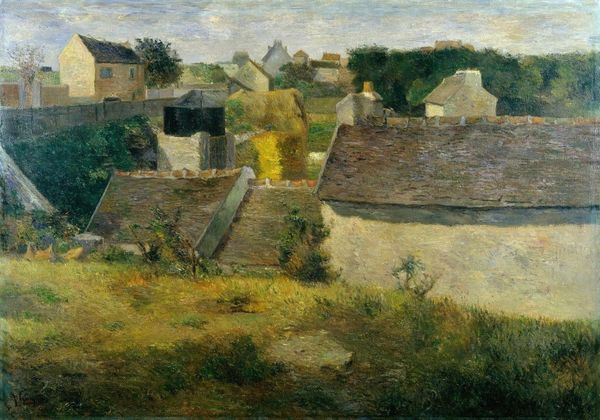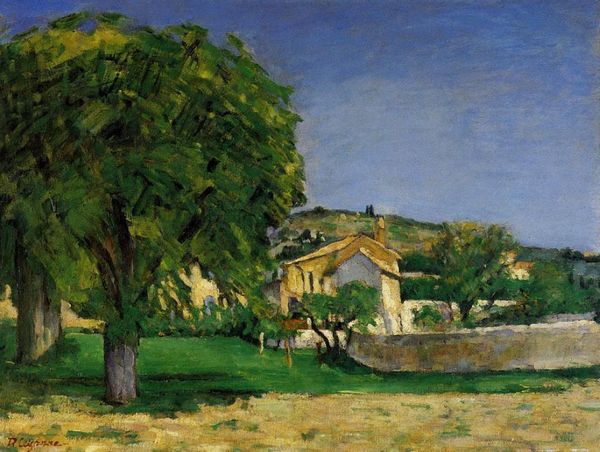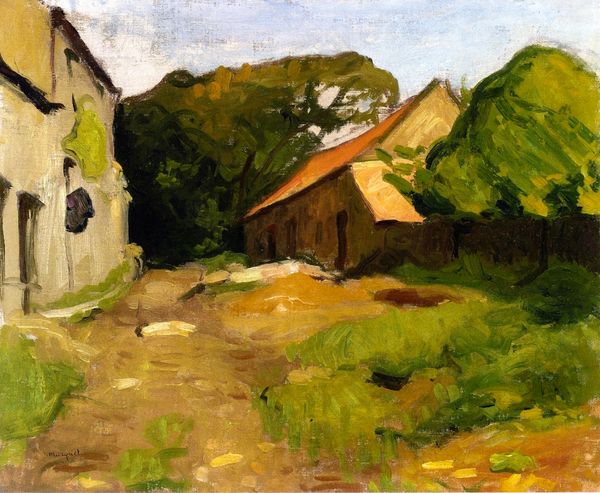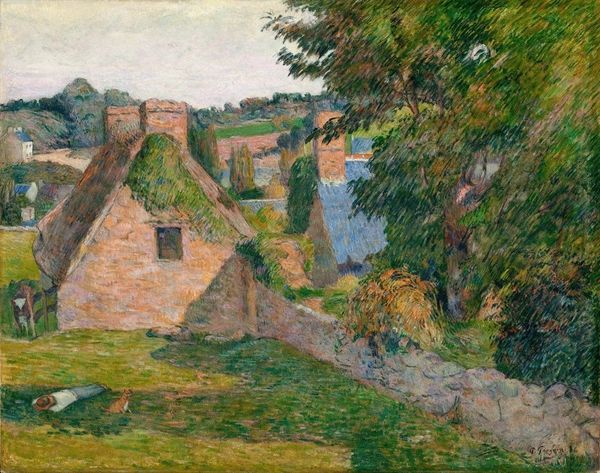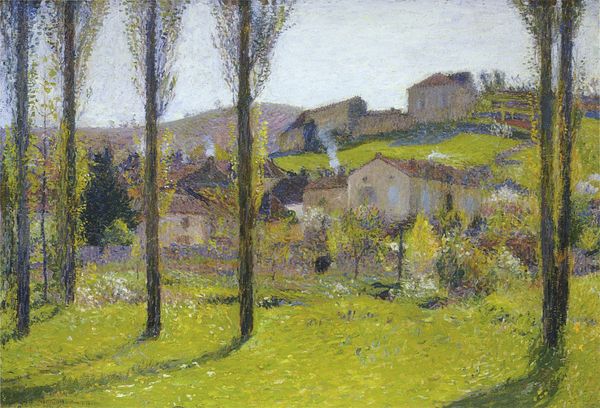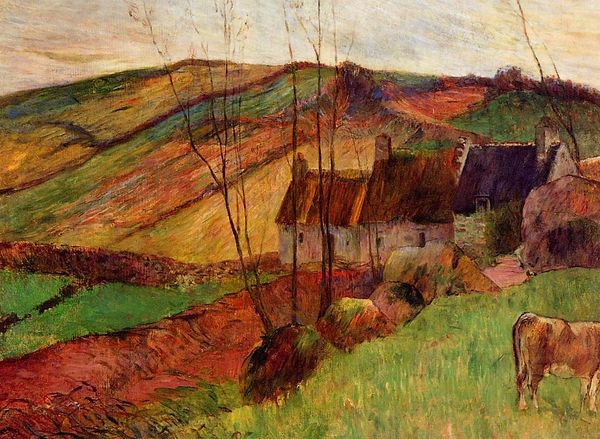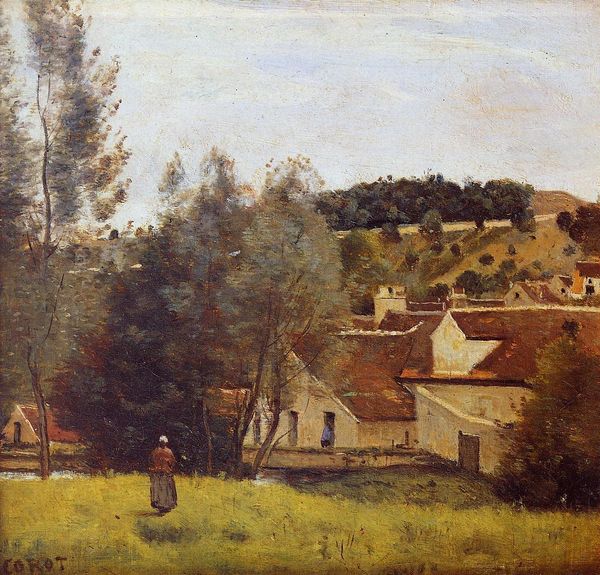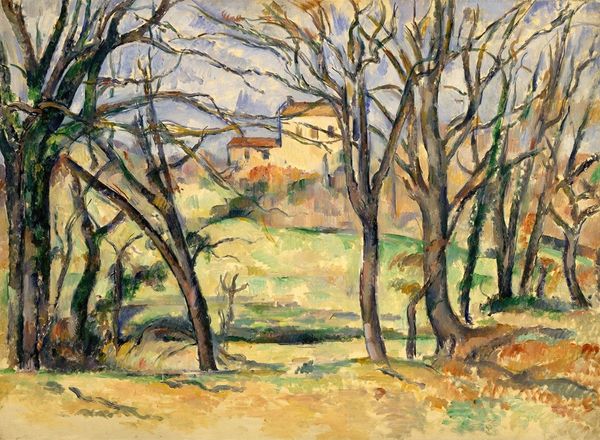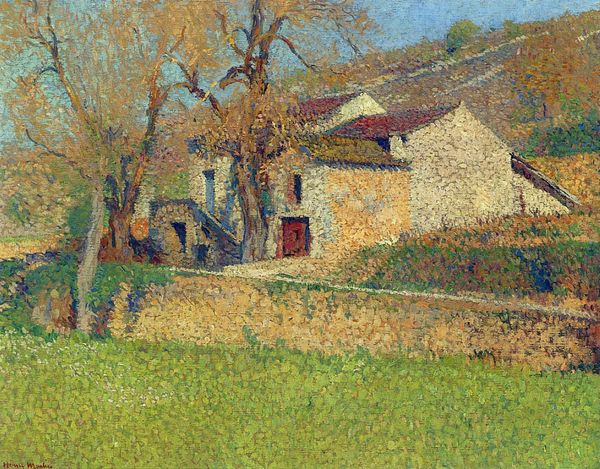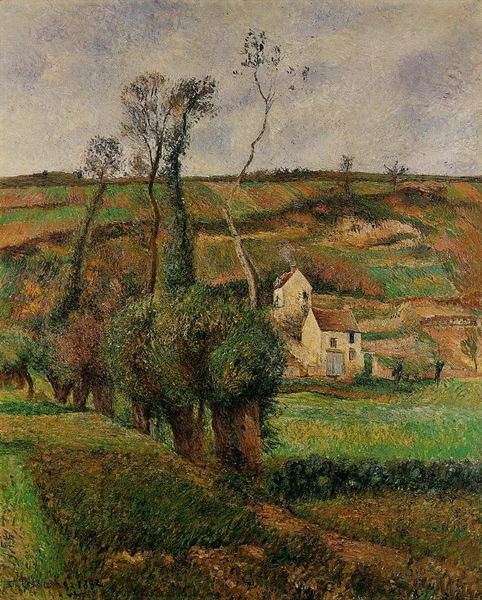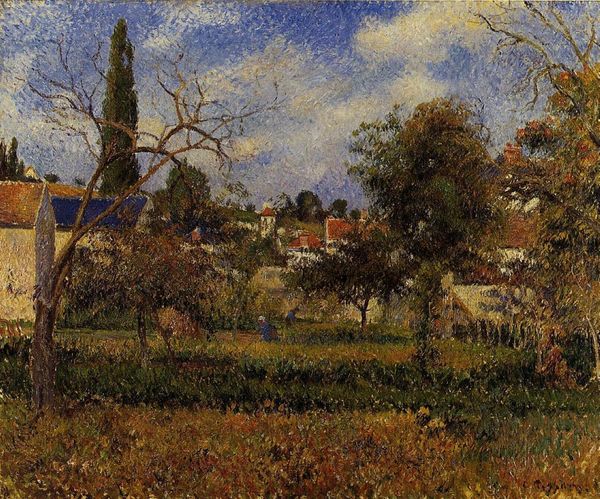
painting, plein-air, oil-paint
#
tree
#
painting
#
impressionism
#
plein-air
#
oil-paint
#
landscape
#
figuration
#
oil painting
#
post-impressionism
Copyright: Public domain
Editor: Today we're looking at Paul Gauguin's "Rouen Suburb," painted in 1884. It's an oil painting, and the composition really strikes me – how the scene seems to climb uphill. What do you see in this piece? Curator: The ascent you noted is central. Consider how Gauguin utilizes the visual plane – the rising horizon line truncates depth. Note also how the brushstrokes, distinct and directional, model form, creating a tension between the two-dimensionality of the canvas and the three-dimensionality of the depicted scene. Do you observe any dissonance? Editor: Well, the color palette feels harmonious, lots of greens and yellows... But the perspective *is* a little odd. It feels almost flattened in areas, especially near the top. Is that intentional? Curator: Indeed. Gauguin experiments with perspective, consciously flattening space. The houses atop the hill are rendered with almost childlike simplicity, disrupting traditional perspective to draw focus on the interplay of color and shape. He directs the gaze by distorting visual expectations. How does this affect your reading of the composition? Editor: I see it now. By flattening the top and emphasizing the brushwork throughout, the landscape becomes more about the act of painting itself than about representing a real place. It’s less a window and more an object. Curator: Precisely. Gauguin uses formal elements to challenge the conventional illusionistic function of landscape painting. Editor: So, by analyzing the composition and brushwork, we can understand Gauguin's intention to move beyond just representing reality? It makes you see a painting with different eyes. Curator: Precisely, the inherent qualities unveil a visual dialogue divorced from representational constraint.
Comments
No comments
Be the first to comment and join the conversation on the ultimate creative platform.
